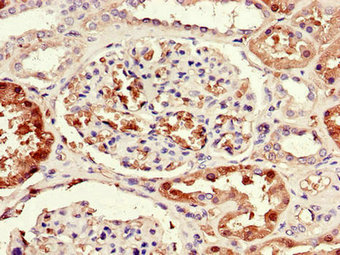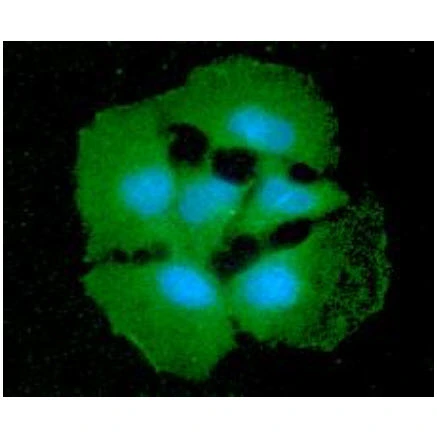
ICC/IF analysis of Hep3B cells using GTX57595 SORD antibody. Blue: DAPI Green: Primary antibody Dilution: 1:100
SORD antibody [AT10F4]
GTX57595
ApplicationsImmunoFluorescence, Western Blot, ImmunoCytoChemistry
Product group Antibodies
TargetSORD
Overview
- SupplierGeneTex
- Product NameSORD antibody [AT10F4]
- Delivery Days Customer9
- Application Supplier NoteWB: Recommended starting dilution is 1:1000.. *Optimal dilutions/concentrations should be determined by the researcher.Not tested in other applications.
- ApplicationsImmunoFluorescence, Western Blot, ImmunoCytoChemistry
- CertificationResearch Use Only
- ClonalityMonoclonal
- Clone IDAT10F4
- Concentration1 mg/ml
- ConjugateUnconjugated
- Gene ID6652
- Target nameSORD
- Target descriptionsorbitol dehydrogenase
- Target synonyms(R,R)-butanediol dehydrogenase; epididymis secretory sperm binding protein Li 95n; HEL-S-95n; L-iditol 2-dehydrogenase; polyol dehydrogenase; RDH; ribitol dehydrogenase; SDH; sorbitol dehydrogenase; SORD1; SORDD; XDH; xylitol dehydrogenase
- HostMouse
- IsotypeIgG1
- Protein IDQ00796
- Protein NameSorbitol dehydrogenase
- Scientific DescriptionSorbitol dehydrogenase (SORD; EC 1.1.1.14) catalyzes the interconversion of polyols and their corresponding ketoses, and together with aldose reductase (ALDR1; MIM 103880), makes up the sorbitol pathway that is believed to play an important role in the development of diabetic complications (summarized by Carr and Markham, 1995 [PubMed 8535074]). The first reaction of the pathway (also called the polyol pathway) is the reduction of glucose to sorbitol by ALDR1 with NADPH as the cofactor. SORD then oxidizes the sorbitol to fructose using NAD(+) cofactor.[supplied by OMIM, Jul 2010]
- Storage Instruction-20°C or -80°C,2°C to 8°C
- UNSPSC12352203

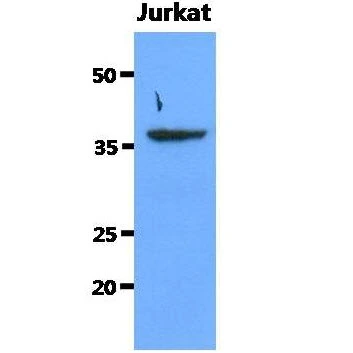
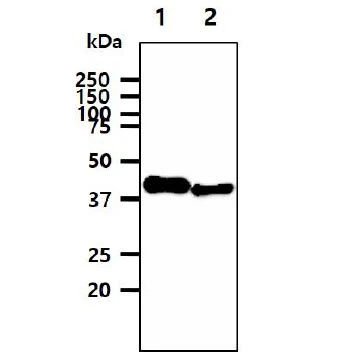


![IP analysis of DDDDK tagged Sorbitol Dehydrogenase overexpressed HEK293T lysate using GTX83583 Sorbitol Dehydrogenase antibody [2A10].After extensive wash to remove any non-specific binding, the immuno-precipitated products were analyzed with rabbit anti-DDDDK polyclonal antibody. IP reaction : 2microg antibody / 500microl cell lysate](https://www.genetex.com/upload/website/prouct_img/normal/GTX83583/GTX83583_3399_IP_w_23061420_680.webp)
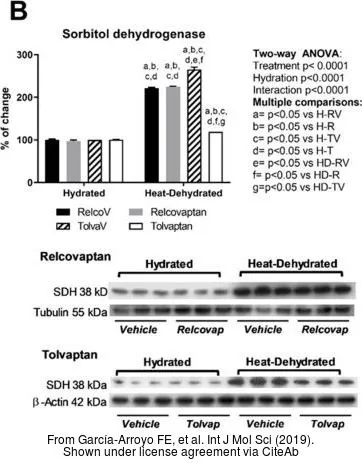
![WB analysis of HEK293T cells transfected with Sorbitol Dehydrogenase plasmid (Right) or empty vector (Left) for 48 hrs using GTX83589 Sorbitol Dehydrogenase antibody [9E7]. Loading : 5 ug per lane](https://www.genetex.com/upload/website/prouct_img/normal/GTX83589/GTX83589_3760_WB_w_23061420_570.webp)


